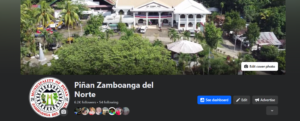Like most towns in the province of Zamboanga del Norte, Piñan is inhabited by people from different races but originally it was the Subanen tribe that populated the area. Most of its native folks before practice the cultures and traditions of the Subanen. However, when people from different provinces, as far as the Visayan provinces reach the place and started to make a living in the municipality things have change and the land known as Piñan grow into a municipality known today as “The Haven of Zamboanga del Norte”.
The natives with the settlers started to engage in farming which became their common livelihood due to the fertility of the land, while others engage in business and in commerce.
There are several religious affiliations that rooted in town, from the Roman Catholic which has the biggest number of population, other groups such as Protestants (UCCP), Aglipay and other religious groups also exist in the municipality.
The dialect which is widely spoken in the municipality is Cebuano. Other dialects such as, Tagalog, Subanen, Boholanon, Ilocano/Hiligaynon and other dialects are also used by some people in town.
Piñan started as a municipality part of Dipolog which is its mother city. It was established on August 22, 1951 and begun to exist as an independent municipality on December 8, 1951, that marks its inauguration which was held at exactly 2:35 pm.
Ever since the inhabitants of Piñan were engaged in farming, they cultivated their field by using “kaingin” system in which the land was cleared by setting fire to the woody plant and bushes, after which, holes were bored in the ground with a pointed sticks and the seeds were then planted there.
They also used wooded plows and harrows drawn by carabaos. Then, Piñan successfully became the source of farm production using their famous horses or cattle driven caretela, until most of the time, people from neighboring municipalities go to Piñan to purchase agricultural products, in which then, they established a so called “tabuan”.




